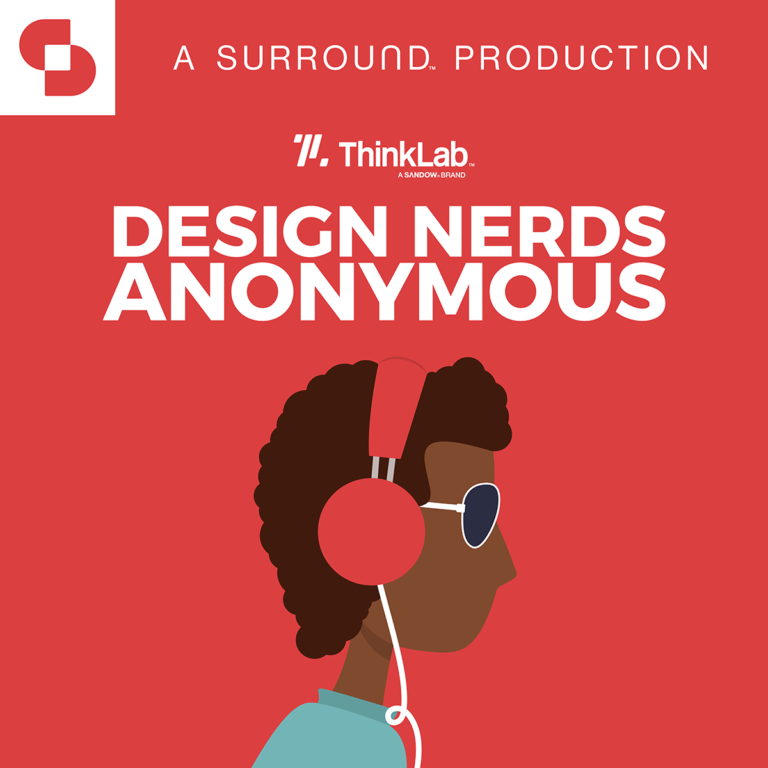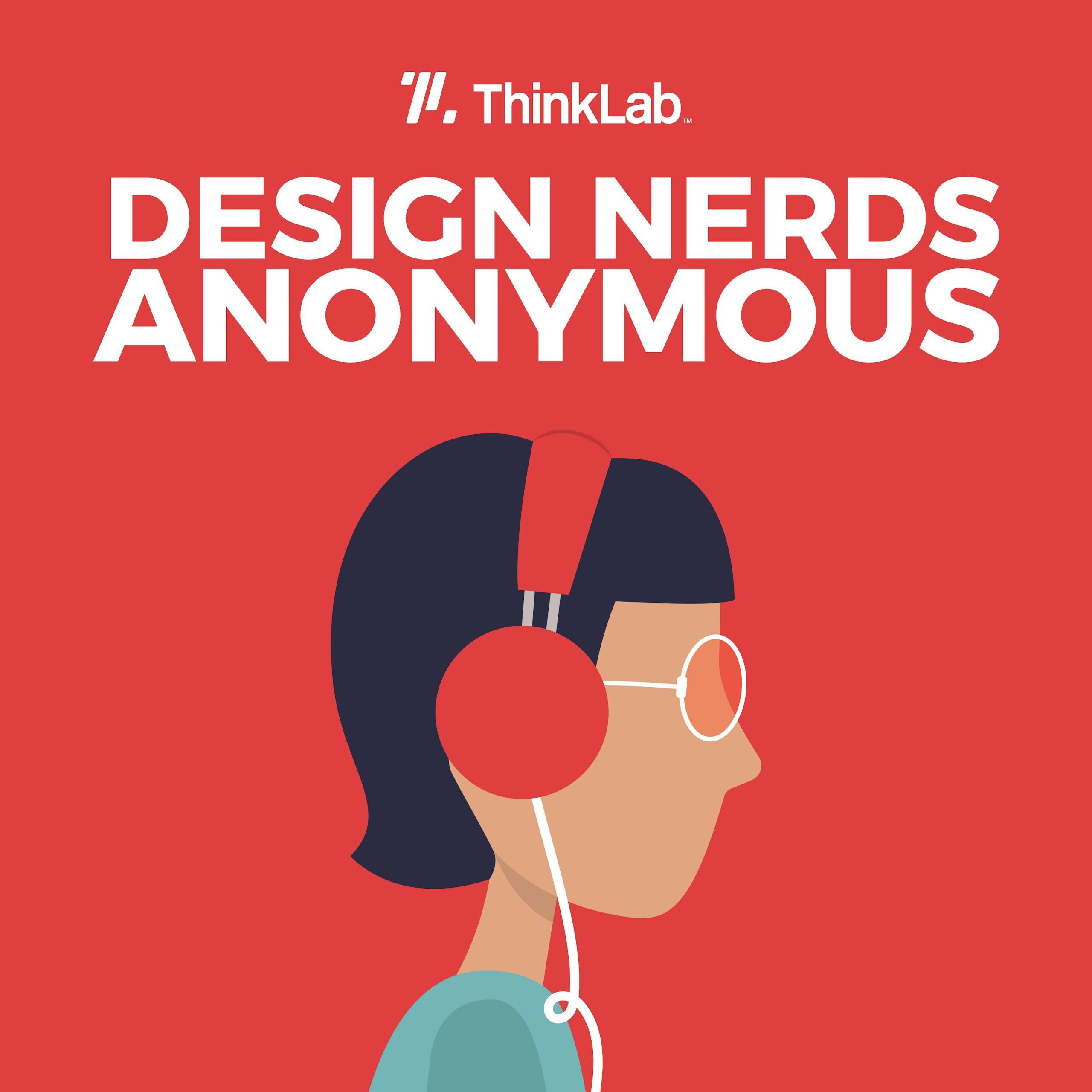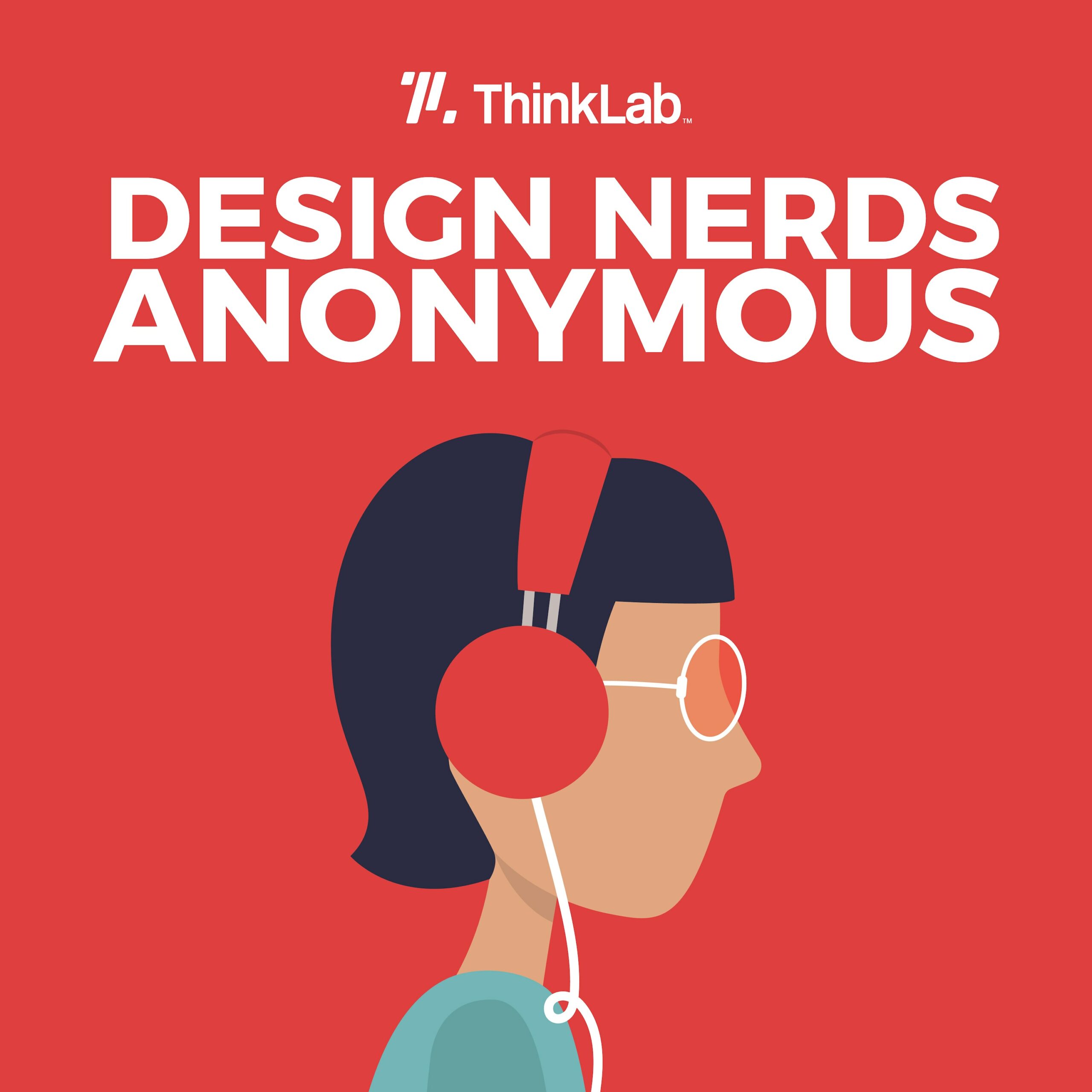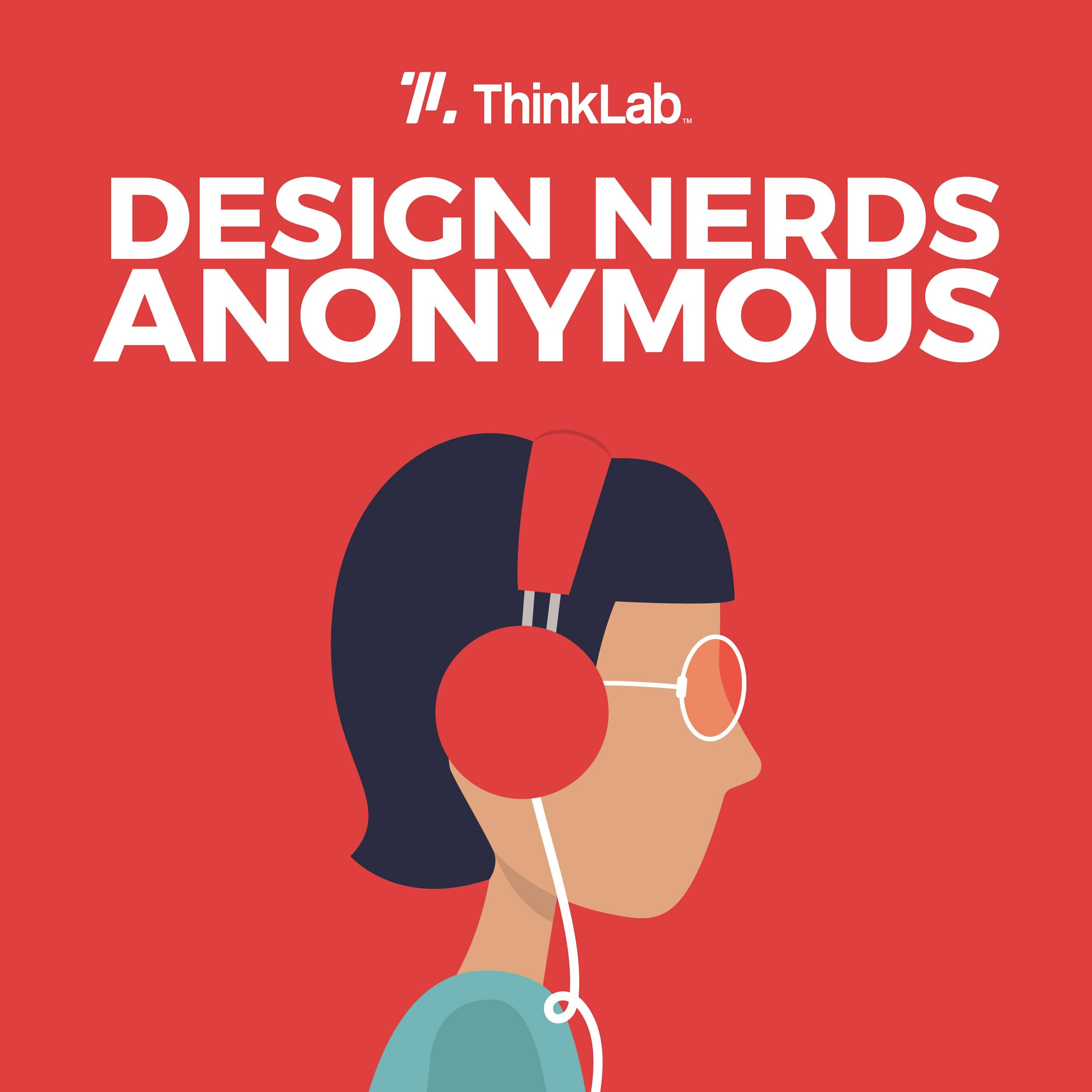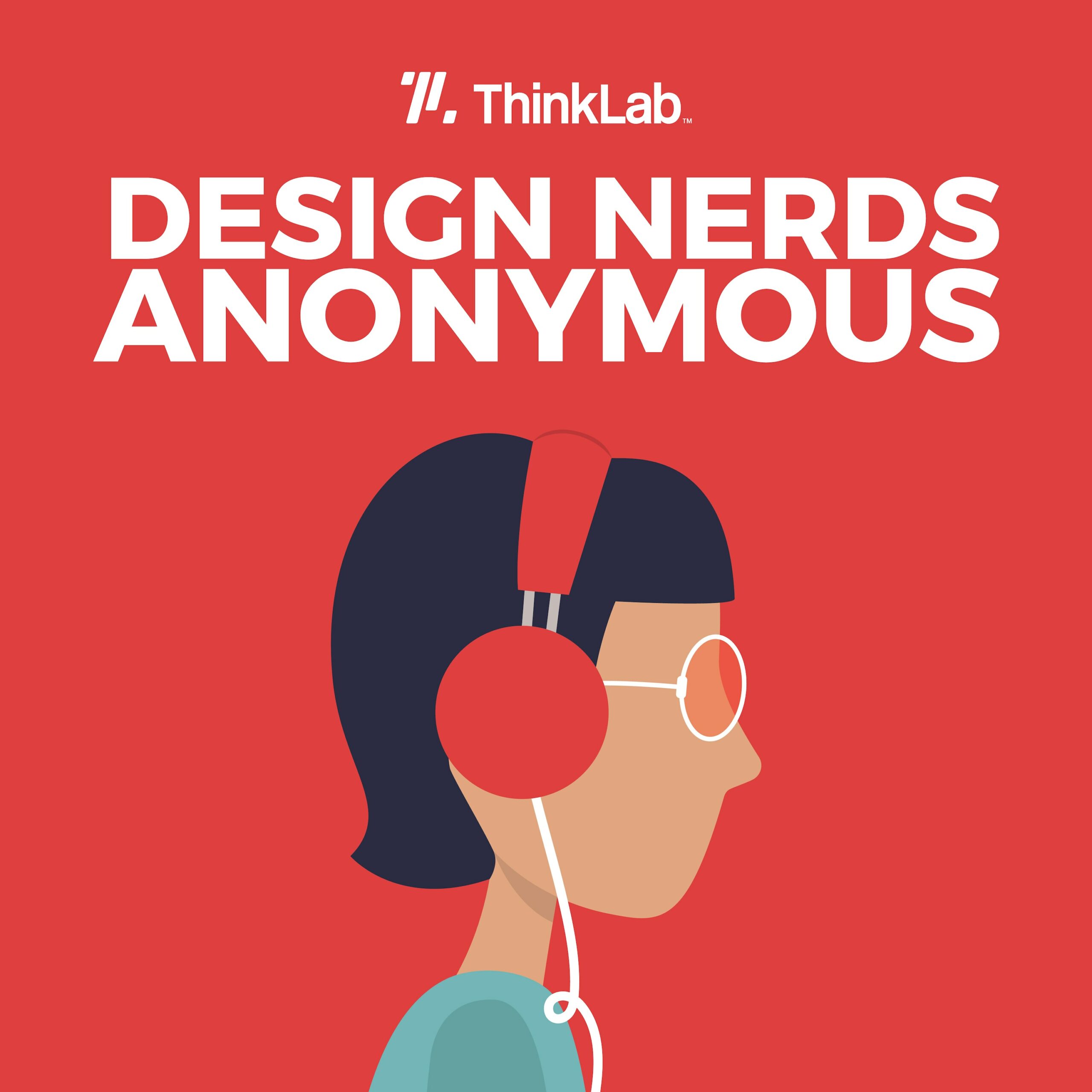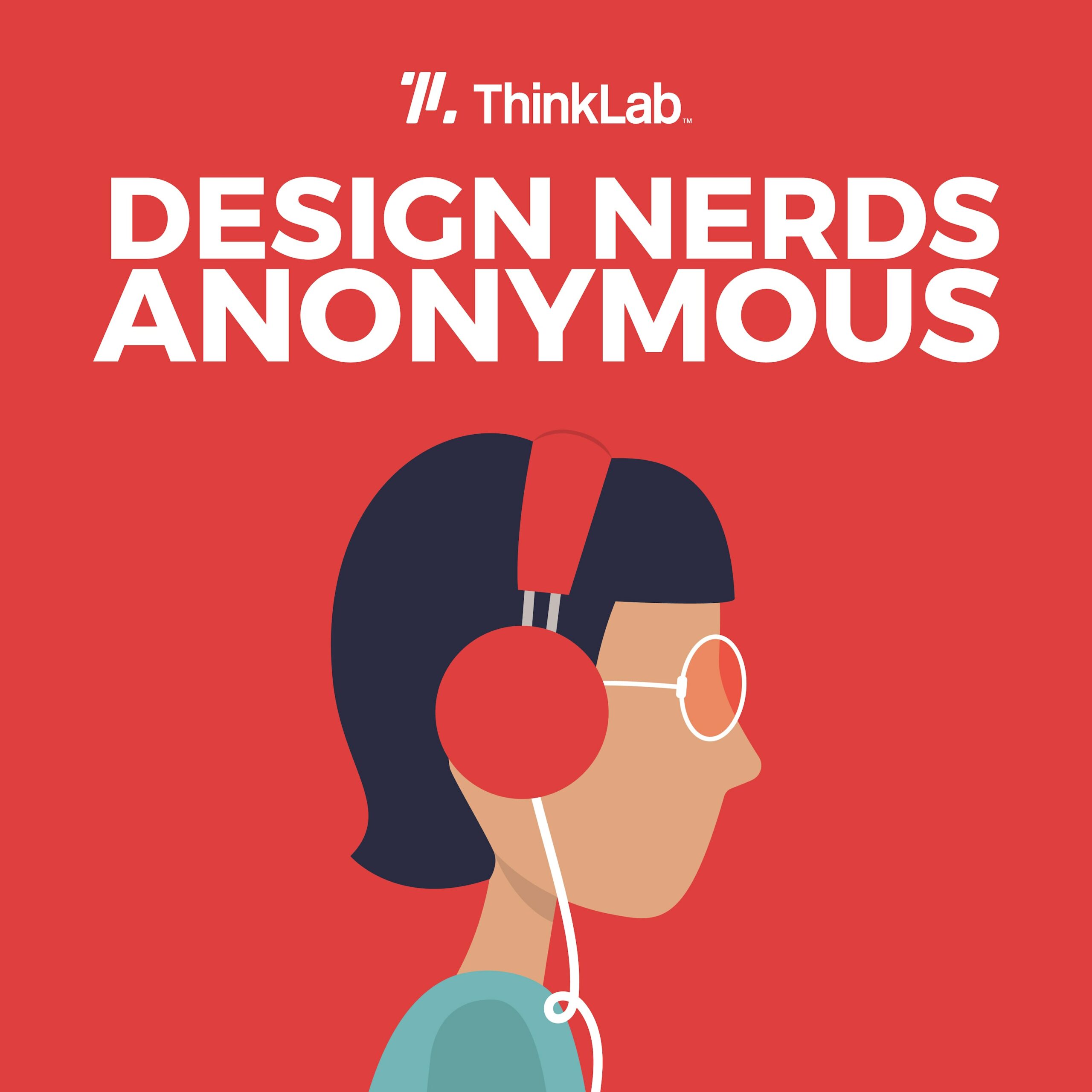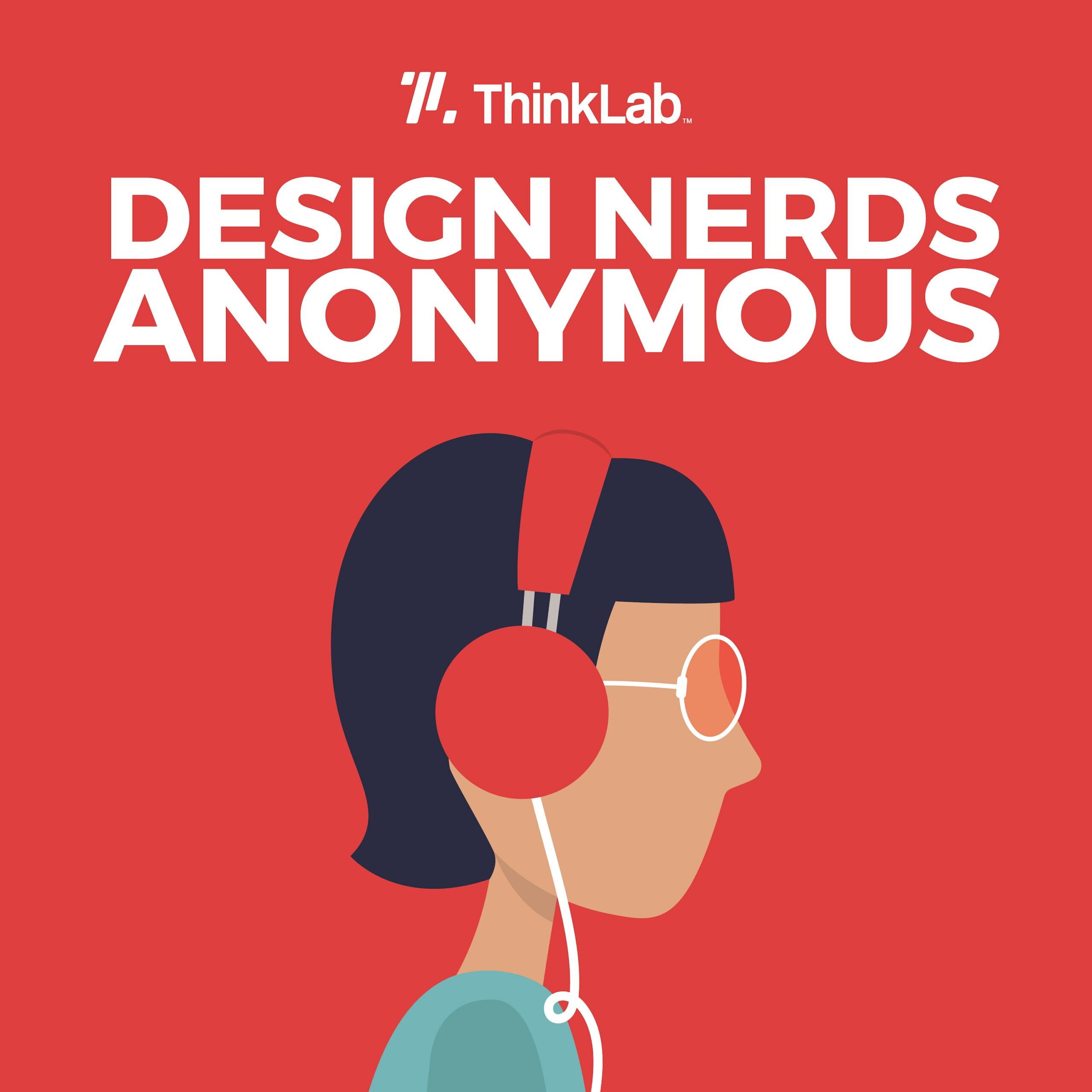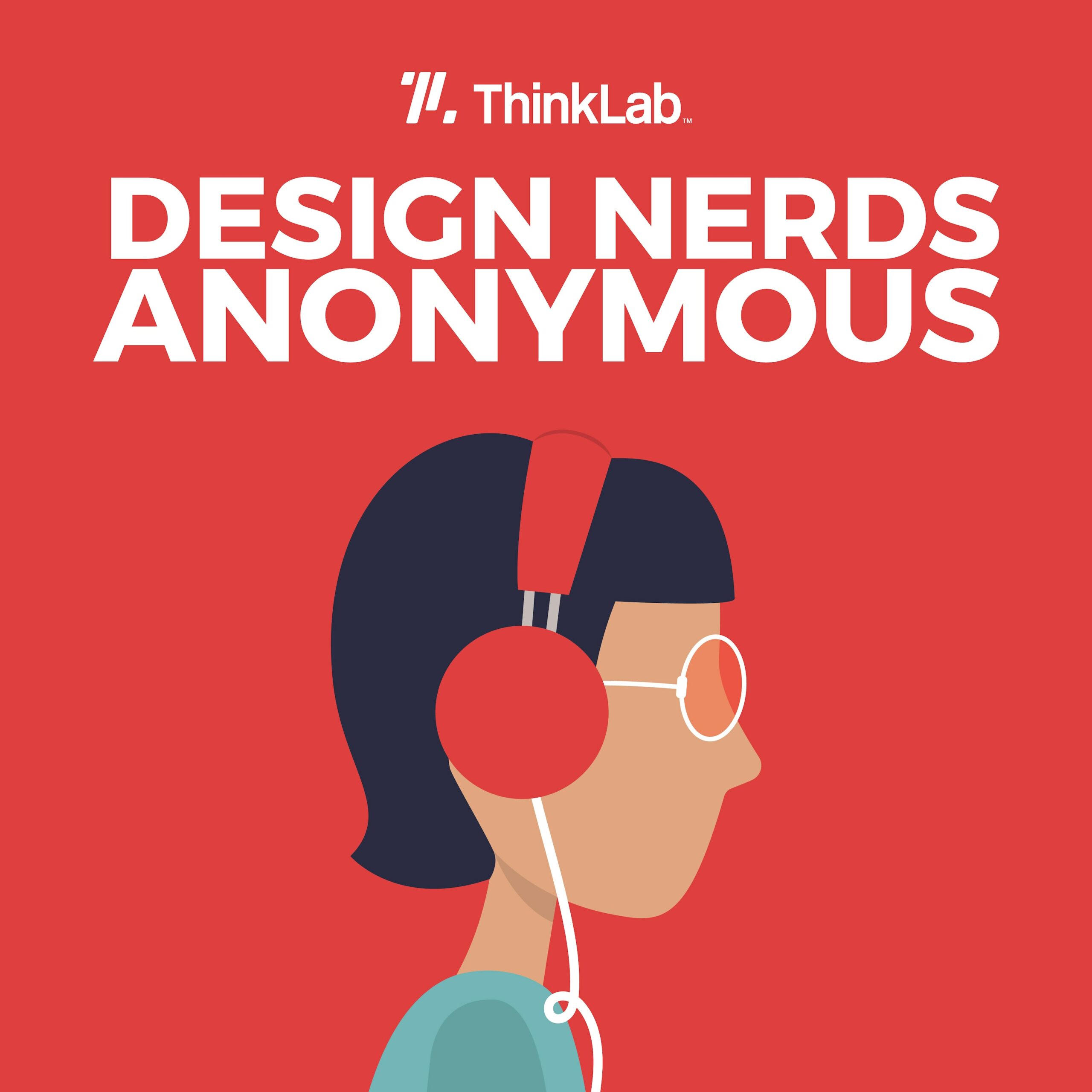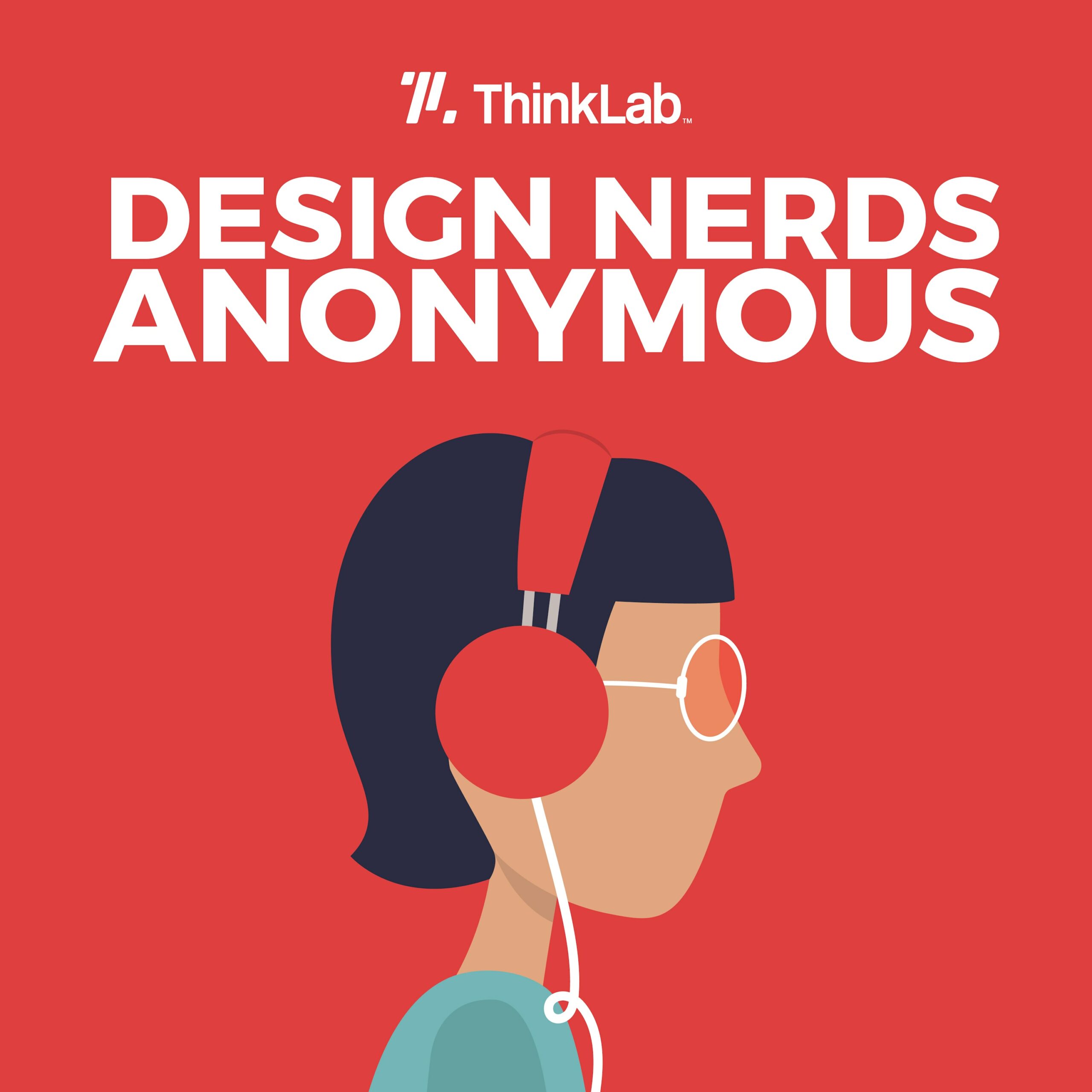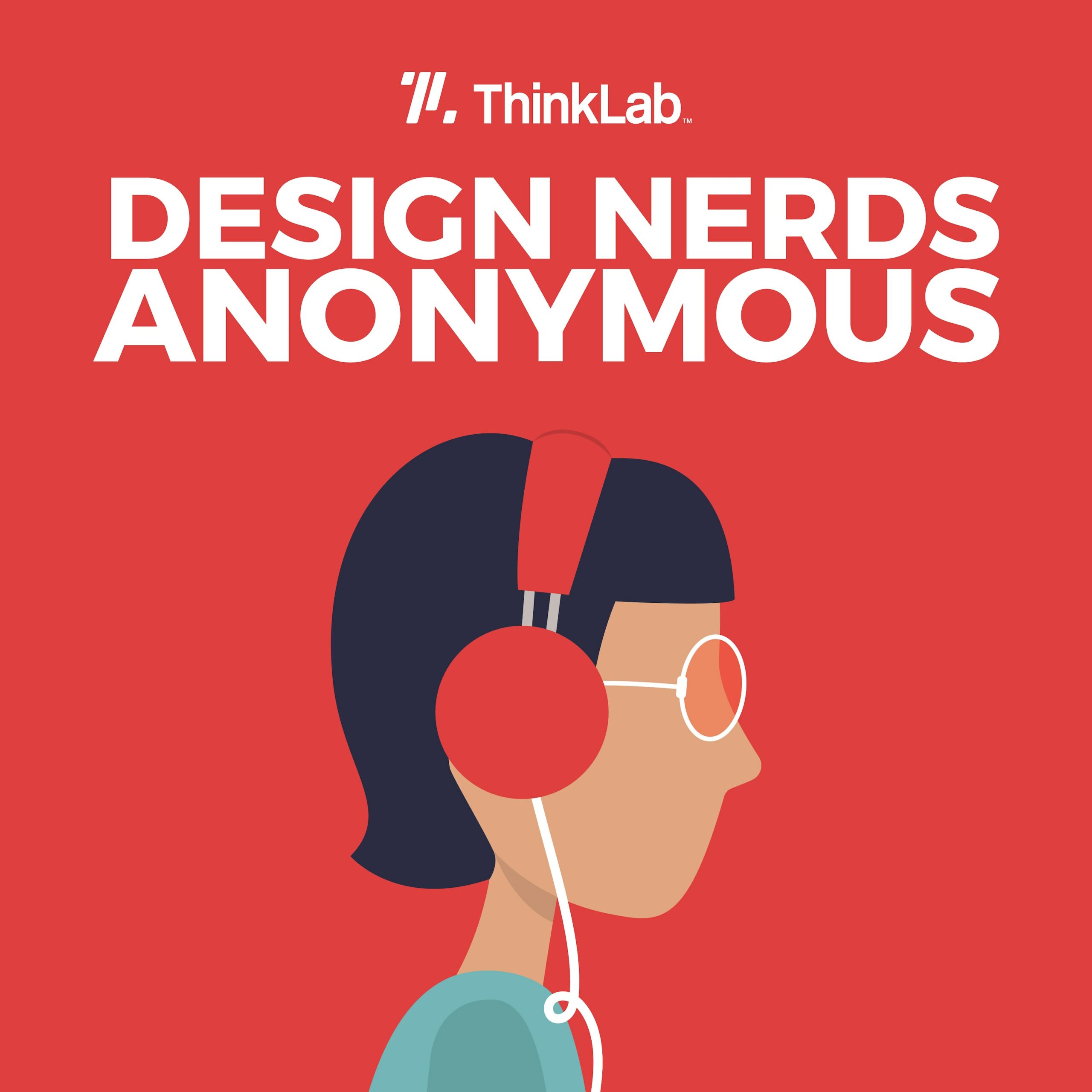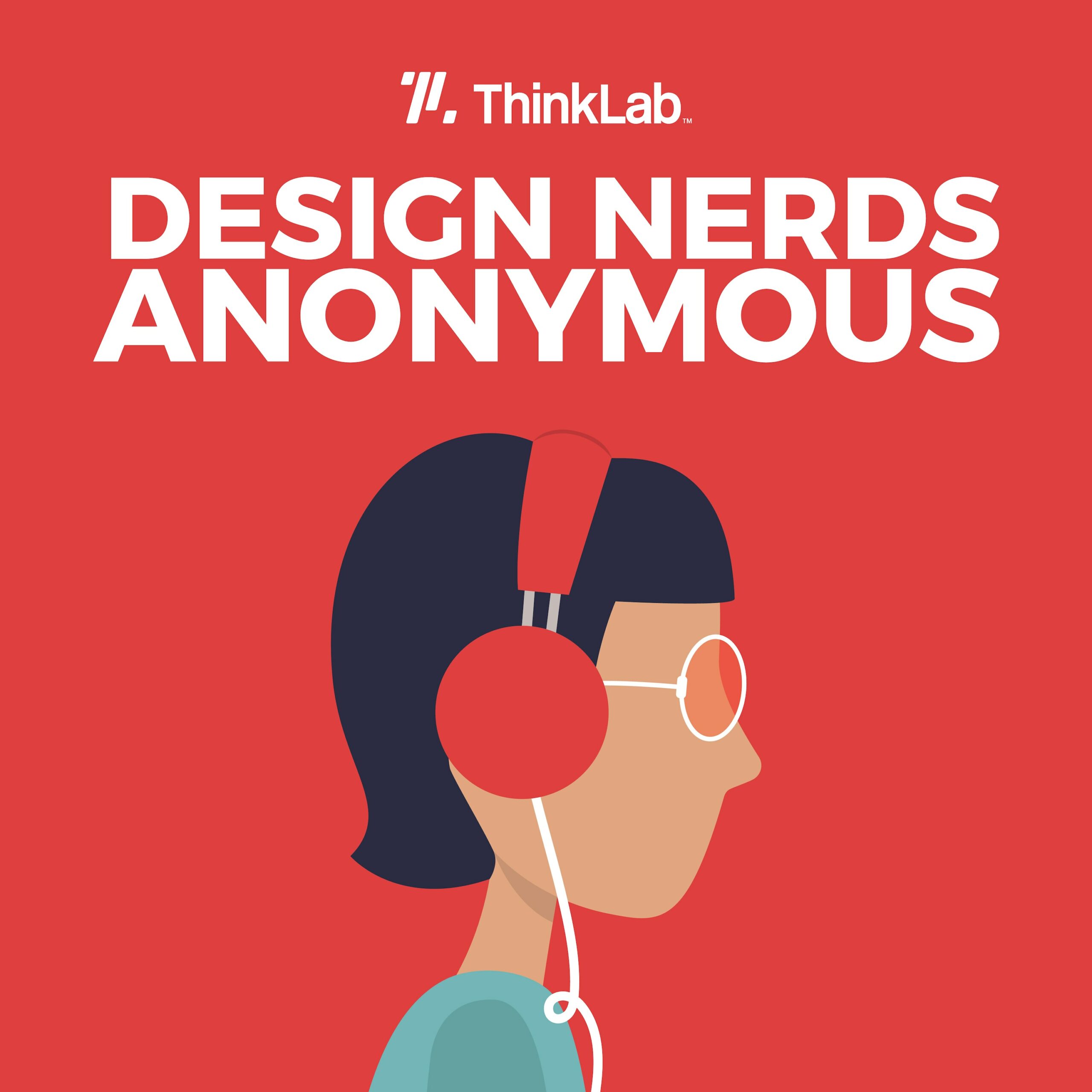In this episode, ThinkLab interviews two experts on the importance of buyer personas and how these profiles can help guide brands on how they go to market, as well as ease frustration with the specifying process in a phygital world.
Our first guest is Jim Kraus, president of the Buyer Persona Institute, who defines how these personas work by walking through what he calls “the five rings of buyer insights.” Kraus also discusses how the wider world leverages personas for sales and marketing and explains ways that companies commonly fail to get the most out of persona work.
Our second guest is Meredith Campbell, the host of The Learning Objective podcast and part of ThinkLab’s research and content development team. She shares an inside look at ThinkLab’s most recent design hackathon research, which explored the desired balance between human and digital interaction with brand reps today. From this proprietary research, ThinkLab identified and developed unique specifier personas specifically for the commercial interior design industry and captured each persona’s distinct preferences throughout the specifying journey.
In this episode:
[6:58] Jim explains “the five rings of buyer insights,” which includes desired outcomes and the buyer’s journey.
[9:45] “If you just have demographics on a buyer persona, you’re not going to be able to get that deep. You’re not going to get to that layer of trust with them.”
[17:28] Meredith explains the roots of the persona research drawn from ThinkLab’s hackathon sessions.
[22:00] Meredith identifies the one key success factor shared by all personas and describes how each persona defines it differently.
Connect with our interviewees on LinkedIn:
Jim Kraus
Meredith Campbell
This season of Design Nerds Anonymous is brought to you by Mannington Commercial, theMART, and NeoCon, companies doing big things to move the design industry forward.
Download our leading-edge playbook: 5 Personas and 50 Ways to Design Their Phygital Journey.
Design Nerds Anonymous is a proud member of the SURROUND Podcast Network. Discover more shows from SURROUND at surroundpodcasts.com. This episode of Design Nerds Anonymous was produced and edited by SANDOW Design Group, with music from Blue Dot Sessions. Special thanks to the podcast production team: Hannah Viti, Wize Grazette, and Samantha Sager.
Amanda Schneider: Welcome to season four of Design Nerds Anonymous.
This season will feel a little different. You see, ThinkLab has just completed the design industry’s first-ever persona study as part of our most recent hackathon to explore this phygital world we’re living in.
This study looked at architects, designers, and the ecosystem that surrounds them. So, whether you’re a product manufacturer trying to get specified, a designer trying to forge deeper connections with your clients, a distributor looking to gain empathy for how decisions are made, or any other player in the design ecosystem, we hope that you’ll be inspired over the next seven weeks.
We all know our B2B industry is unique. Maybe you’ve even said to yourself, “No, really, our industry is different.” But, accelerated by the pandemic, [00:01:00] what you’ll hear this season is that we aren’t so different after all. Many of the challenges faced by other industries now apply.
So more than any other season, we’ll be unpacking leading thinking around process innovation, inspired by outside-the-industry experts and some within, but pulling all of that through the ThinkLab lens to our unique world.
Meredith Campbell: We’re taking some of the B2C consumer methodologies for research and applying them to our industry through things like secret shoppers for showrooms, and now persona research to really look at the phygital journey in ways that we can maximize the personalization that this offers.
Amanda: The voice you just heard was from Meredith Campbell, part of our research and content development team at ThinkLab. In chapter two of two in this episode, you’ll hear more from Meredith about our work to customize [00:02:00] personas for the design industry. She’ll explain our industry-focused approach to personas and explain how these personas can help you prioritize not only your marketing investments, but also the time of those who are selling your product or services.
But first, in chapter one, you’ll hear from Jim Kraus, president of the Buying Persona Institute. He’ll help us understand how the broader world leverages personas for sales and marketing. You’ll learn what a persona is, why they’re important, and how to start your persona journey — even if you want to DIY it.
Welcome to season four of Design Nerds Anonymous, the podcast that sparks curiosity at the intersection of business and design. I’m your host, Amanda Schneider, founder and president at ThinkLab, the research division of SANDOW Design Group.
So, let’s dive in to chapter one. Our first interviewee and [00:03:00] assistant to setting up this topic is Jim.
Jim Kraus: My name’s Jim Kraus, president of the Buyer Persona Institute. My role, basically, is running the company, but more importantly, being the advocate for a way of doing buyer personas that’s maybe a little bit different than a lot of the marketplace thinks about what buyer personas are.
So I kind of wear two hats. One is trying my best to educate the market around buyer personas, and maybe a new way of thinking about buyer personas that can make a bigger impact on marketing and sales than maybe they originally thought. The other hat I wear is just working with companies on a day-to-day basis to help guide them in their buyer persona efforts, so that they can maximize any investment they’re making on them.
Amanda: Jim shares that while some brands create personas, common errors include categorizing them with great information that doesn’t actually help you craft their buying journey.
Jim: If you were to do a “buyer persona,” quote unquote, defined as [00:04:00] demographics, right? “Here’s a particular role. Here’s their industry, here’s their enterprise size.” Even “here’s their top priorities and challenges that they have.” That’s fine. That’s helpful. But what it doesn’t do is it doesn’t go to that layer of depth where you’re getting into their actual buying decision.
So let’s say, for example, you have a buyer persona or a profile of a CIO, and you might know, “Hey, here’s the things the CIO is really worried about. Here’s their opportunities and things they’re focused on. Here’s something about their demographics or firmographics.” It doesn’t help you develop marketing strategy and marketing content that’s going to actually help you sell the product or service that you’re offering them. So our approach to buyer personas is really profiling the buying decision, not the individual. We call that, kind of, the “cover page” of a buyer persona.
The buyer personas that we focus on tend to be for products and services that are what we call high-consideration decisions. So these aren’t necessarily, [00:05:00] you’re walking into a store and picking a pack of gum or what paper plates to buy. These are things that are decisions that either could be personal or professional. You’re a decision-maker on a technology solution your company’s looking for, or maybe you’re looking to hire a consultant for an important engagement for something you’re working through.
The commonalities in all these types of decisions is they take longer to do. They tend to be a little bit more high risk for the buyer; there’s more at stake. These are things that — probably a decision they’re going to have to live with for a while. So there’s a lot at stake.
And the other characteristic I’d point out is that they’re usually looking at multiple options. And with all the personas we’ve done — and with a lot of research that’s out there — when it comes to decisions like this, a lot of times buyers have a difficult time making an apples-to-apples comparison between the different options that they have to choose from. All of those things lead to uneasiness, to a lot of questions about the purchase decision.
So, [00:06:00] fundamentally, what you’re competing on, as the provider of those types of products and services, is trust, right? You’re trying to be the provider that — You’ve got this uneasy buyer, per se, and you’re trying to make them feel confident that you understand them and that you have the right products and services to meet their needs.
Amanda: Where you start your persona journey may seem sort of obvious.
Jim: We would recommend people go out and talk to recent buyers of the actual product and service that they’re offering and not your own customers, not the sales force, not executives that have thoughts about what the market is saying. Those are all great. But the only experts when it comes to the buying decisions are the actual people that are making that purchase decision. They are the experts, and the only way to understand what’s in their minds and their concerns and triggers is actually talking to them, doing an in-depth interview to understand five key things.
Amanda: As part of their process, the Buyer Persona Institute takes you through what they call the “five rings of buyer insights.” [00:07:00] The first one is prior insights, or triggers.
Jim: These are the reasons that that particular buyer is looking for that particular solution. There’s a good chance that they’ve had this challenge for a while. What is the thing that’s triggering them to look for it in this moment?
Amanda: The second one is success factors.
Jim: These are desired outcomes. These are all the things that they need to achieve with the investment that they’re making.
So, the first two insights — the prior insights or the triggers, and the success factors or the benefits — these are the places that you really want to connect with buyers in your marketing strategy and your messaging, right? These are the first two. So they understand that you know what outcomes they’re looking to achieve, and you can show them a path to achieving those, going back to that trust factor.
The next two are also pretty important.
Amanda: The third one is perceived barriers.
Jim: Perceived barriers are all the things that would cause a buyer to have fear or concern about [00:08:00] making that investment with anybody, or making it with you. So, these are things that are concerning to them, that they’re fearful of. You want to know what those are, because you want to address those proactively, right? They’re not going away. There’s no sense hiding, trying to pretend like they don’t exist. You want to understand what those are.
Amanda: And the fourth is decision criteria.
Jim: The way we like to think about decision criteria is these are all the questions that your buyers are going to have about this particular buying decision. Again, going back to that notion of, so they trust you, right? So, you want to know what all those questions are.
One of the ways we perceive barriers and decision criteria is when we do interviews, and what we recommend when you talk to recent buyers is to really go through their entire story so you understand the entire evaluation process. And actually, how did they find providers to even consider, and how did they winnow down their choices? If it’s a business-to-business type decision, how’d they go from five providers to three and from three to two? And that’s where you get all the perceived barriers, and all the [00:09:00] decision criteria comes out. It’s very detailed. It’s very specific. And it informs the actual marketing you’re going to do around that particular product or service.
Amanda: Lastly, the fifth and my personal favorite: the buyer’s journey.
Jim: That [consists of] things like what individuals in the organization are involved in the decision. Or, if it’s a personal decision, who’s involved in it? What are the information sources they use and trust? What are the steps in the process?
You get all these buyer insights from doing these interviews, and once you have all these buyer insights — the first four: the prior insights (or triggers), the success factors (or benefits), the perceived barriers, and the decision criteria — that should be the core of your messaging. If you just have demographics on a buyer persona, you’re not going to be able to get that deep; you’re not going to get to that layer of trust with them.
So the combination of what I described as a buyer profile and those five rings of buyer insights — to us, that is what is a complete buyer persona. And that [00:10:00] could be a game changer, because it can really be your North Star and really everything you’re doing in marketing and messaging — and sales, for that matter.
Amanda: As ThinkLab can attest, gathering data is sometimes the easy part. It’s turning data into actionable insights — and empowering those who can turn insights into action — that is much more difficult. So we asked: How can persona insights change how you go to market?
Jim: What we would recommend is, once you have your buyer persona and you have all these five rings of buyer insight, the real key is the next step that you take. Map all the buyer wants and needs to your capabilities.
If you can picture a Venn diagram, on the left-hand side of your Venn diagram, you have a circle. And the circle is everything your buyer wants, needs, and wants to experience on their buyer’s journey. So these are all the things that you just found out in your persona. You’ve done the persona work. You found out all these things. You know the answer, you know what they want. That’s a pretty huge checkmark right there.
The [00:11:00] circle on the right of the Venn diagram, the other circle, is the next step to take, which is: What are all your firm’s capabilities specifically mapped to all the buyer’s wants and needs that you found out? You want to figure out: What is your company? What can your company address credibly, and even differentiate yourself versus other alternatives they may be considering?
The intersection between those two points — and there’s different ways to get about there — the middle section is the sweet spot, right? That is the place where you can feel 100 percent confident that when you go to market, the things you’re going to be talking about, communicating about, customer experience or buyer experiences you’re going to be coming up with, are going to be perfectly in line with what your company can do.
So the power of that is you know your messaging’s going to be on point. You have a credible story to tell. You’ve got great conversation starters for your sales force, because you’d go out to them and — The sales force doesn’t want to see a buyer persona. The sales force wants to know: What do I need to communicate and talk to my buyers about? What are they going to care about? What’s going to come out of that is a whole bunch of proof [00:12:00] points. So now the sales force can go in there, and they can be super confident that they’ve got something that’s going to be relevant to the buyers. They feel really good that their organization has what it takes to really back up what they’re saying.
Amanda: Earlier, we heard about pitfalls in how personas were constructed, but let’s hear from our persona expert about other ways companies commonly fail to get the most out of persona work.
Jim: We see this all the time. I call this the buyer persona challenge, and it’s usually somebody either has no or insufficient buyer personas, meaning they just don’t have enough information for me to be terribly actionable. Or, on the other hand, they have too many personas. You really shouldn’t have any more personas than you can actually devote resources to, and have a marketing strategy for, so you’re not going to go to market 50 different ways, as an example, or even 10 different ways.
The other thing is Gartner’s put out some really great research showing that, if you try to tailor your messaging too much to different buyers, that actually causes consternation within an organization. It actually hurts rather than helps if you’re going [00:13:00] too tailored to different audience groups. Because the reality is if you base it on the actual buying decision, that is the rallying point, right? That is the point where everybody’s pretty much on the same page. There may be little nuances here and there, but you’re trying to focus on the specific decision.
Amanda: In a Gartner survey from 2019, respondents were asked what caused frustration in the buying process. Here are the top four responses, which, from our research, relate directly to many frustrations in our industry. Number one: difficulty finding specific information. Number two: getting pushed to buy when just learning or exploring. Number three: too much follow-up. And finally, number four: hard to compare products side by side.
Accelerated by the past two years, we suspect things have gotten even worse from these measurements, as we [00:14:00] explore this dizzying world of digitization that is still quite new. So we asked Jim: How can personas help?
Jim: Buyers are very frustrated, especially with complex B2B decisions. These are really significant purchases for them, whether from a dollar standpoint or just how important it is to the business. And they want to feel as confident as they can be that it is going to be the best solution for their needs. By coming out with generalities or marketing platitudes or information that’s not very specific, all you’re doing is frustrating them. You’re making it harder for them; you’re detracting from trust. You’re actually making the decision worse. So there’s a lot of frustration.
If you take the opposite side of the coin and you say, “OK, if I really understand the buyer’s journey, and I understand all the information that they’re looking for to make a decision, and I understand what all their concerns are, I can come up with a marketing strategy and messaging that is very helpful for the buyer.” You want to be helpful. You want to be informative. These personas are, are a remedy to all of that. [00:15:00] If you do that work and you map it to your capabilities in your organization, it all leads to that trust.
This can be a real game changer. It’s going to help your close rates for sure. It’s going to help you develop thought leadership content. It’s just going to simplify your marketing strategy and it’s going to make it much more on point, so that when you go to market, you can feel really confident that the message you’re getting out there is going to be highly relevant to the buyers that you’re trying to influence and help.
Amanda: So if you are looking to develop a unique approach to personas, you are welcome to reach out to Jim at:
Jim: buyerpersona.com, and you’ll go to the Buyer Persona Institute. The other great thing about the website is we also provide a lot of free resources there. So we have a master class for those do-it-yourselfers that kind of can take you through how to do those buyer persona studies. So there’s a little wealth of information on the website.
Amanda: If this persona work is interesting, feel free to check out the persona experts. But now I’m excited [00:16:00] to dive into an application of this type of persona work to our beloved industry. To help me walk you through that, I’ve invited my co-worker.
Meredith: I’m Meredith Campbell. I’m part of the research and content development team at ThinkLab and the host of The Learning Objective podcast.
Amanda: I asked Meredith to talk to us a bit about where this research started and how we ended up looking specifically at personas for the design industry.
Meredith: For anyone who may not be familiar with the ThinkLab hackathon, it is quite simply a six-month-long research project. And we set out to solve a big, hairy problem that is affecting multiple parties within our industry. And so this year, the problem to solve was this desired balance between human and digital with brands today. Throughout that process, we had interviews and surveys (so, qualitative and quantitative) and also [00:17:00] secondary research.
Back when the research started and even today at the time of recording, a couple of the big things that were affecting our sales teams — and what we were hearing from marketing teams within our clients — were things like, “My time as a sales rep used to be 80 percent in person, and now it’s less than half.” From the marketing teams, we’re hearing things like, “Everything feels important as we’re making the switch to digital, and we really want to understand: What are our priorities? Where do we need to be spending our time?”
The first thing that we did were exploratory interviews, and that was with a team of principals. And these were all from A&D firms. We heard things from this group like, “My reps are my lifeboat. I’ve had 30-plus-year relationships with these people. They save me for myself. They save me when I’m in a pinch.” Yet we have this generation of designers and specifiers coming up who may not have those relationships, especially if they started in the height of the pandemic. We [00:18:00] also heard them say things like, “We’re digitally overdosed because that’s the only information that we’ve been getting.”
And so there were some clear tensions at play, which led us next into our focus groups, which is where we really started to have conversations with multiple members throughout the ecosystem. So, that was A&D, end users, and even some of the real estate community as well. What started to happen is we were going through this journey, and we asked them throughout their buying journey (which is a project journey in our world) what some of their preferences were, what some of their behaviors were. And we started to notice some patterns emerging, and we started to form this hypothesis of “We think that these groups fall into personas.”
It became very clear to us that, while there were some universal truths that were uncovered later in the survey data, which was over 850 respondents from throughout the ecosystem, we really started to hypothesize, “Hey, based on this, we’re [00:19:00] hearing this; I think this is kind of a persona type.” And that’s when we started to get really excited, because we started to see the potential of being able to clarify what these wants and these desires and these priorities were for our partners that we entered into this research with.
Amanda: In chapter one, Jim talked about the five rings of buyer insights. The place that we looked at most was really that fifth one, the buyer’s journey. So I’m going to walk you through a little visualization exercise. We know this is audio, so grab a piece of blank white paper, and if you will, draw a straight line through the middle of your page. Now I’m going to invite you to draw a second, undulating line that loops up above the straight line, and then dips down below it repeatedly with several undulations.
This is a visual that we used as we created buyer journeys for our personas. The undulations above the line represent interactions with real live human beings and undulations below [00:20:00] represent interactions with digital tools. This is where our mapping started: from the perspective of our clients, really understanding in an ideal buyer’s journey where they would self-serve digitally and where they would interact with our beloved human beings.
Meredith: The buyer’s journey was kind of a consistent thing that we looked at throughout the process. If you can imagine, on the top of the line is human and on the bottom is digital: Where are these places when you go to a human? Where are these places that you interact with digital? What would your preference be in those places? We also divided into “human local” and “human remote,” because we started to get a sense that that was going to be part of this as well.
Amanda: This map is ThinkLab’s vision of the new phygital journey. (That’s physical plus digital.) And while much of this was focused on the product specification journey specifically, since our research included designers, architects, [00:21:00] and end users, there will be nuggets in here for those selling services as well.
Meredith: Our industry has been more analog in the past, and now everyone is in this process of figuring out what needs to be digital and how that journey works. Part of what this does is it clarifies and prioritizes, based on each persona, what that preference is. Each persona had its own distinct preference for that blend throughout that digital journey.
Amanda: But, like Jim, Meredith explains how personas should really not necessarily be created around demographics alone. We actually found, for example, that ease of doing business was the key success factor across all of our groups, universally. However, how they define ease of doing business in today’s phygital world varied greatly.
Meredith: One thing that was kind of core to everyone was this ease of doing business. But ease of [00:22:00] doing business to you might look very different than ease of doing business to me, just based on my preferences for how I like to work, my background, the role that I’m in.
There are so many different factors beyond just demographics that go into this. This gave us a level deeper than just saying, “Oh, this person is in this generation” or “Oh, this person is this title” or “Oh, this person works in this sphere of the ecosystem,” because it was a lot deeper than that. And it really spanned those typical demographics that we historically have looked at in our industry.
All of a sudden, I can use that journey and that phygital understanding to help really personalize that. Because we can’t ask every single person what their preference is. And it begins to feel overwhelming, right, if you’re actually giving someone a human where they want to have digital, or you’re not supporting someone with a human where they maybe do feel like they’re comfortable to self-serve digitally, which we also saw.
Amanda: There’s a funny LinkedIn post that we often share with our clients that says, “Imagine if [00:23:00] B2C companies shared information like the average B2B website: ‘Want to know the calories in this protein bar? Sign up for this webinar to find out. Want to know if it contains peanuts? Click here to talk to an expert.’”
And while we kind of chuckle at this, it’s a great example of why we need to find balance in this digital era between digital and human tools.
Meredith: We also saw that digital doesn’t mean no humans. That is something that I think gets maybe a little bit misconstrued in this moment in time that we’re in, where this is all a little bit new to most of us. We’re not saying that the local rep is going away by any means; that’s not what we heard here. But what we’re saying is: What is the highest and best use of human capital throughout the process, for both you as a brand and for your clients to have the best success?
Amanda: So let’s start to paint the picture of the design industry–specific personas.
Meredith: These personas really cover [00:24:00] anyone who is specifying either directly on behalf of themselves as the client or who is working on behalf of their client. It’s really how they’re moving through the project process and how they’re evaluating products throughout the way.
If you look at the range, let’s start with the rep-first persona, which is the persona that most of us are the most used to. It is currently the largest of the survey data, so we believe it’s probably the largest of our sample. You might also hear them say something like, “I am digitally overdosed. I just want to call somebody. I just want to go to the people that I count on.”
And I would say, historically, that’s what we’ve expected: for every sales rep to be the person who caters to the rep-first persona, right? That’s your ideal as a rep, is to have the rep-first person who calls you as their first line of defense. You’re the one who helps them clarify this world that’s so dizzying to them. But they’re only one portion of the personas that we identified. [00:25:00] So it’s really important to understand that there are four others.
And then, on the opposite side of the spectrum, is your digital-first specifier. Something you might hear from your digital-first persona is “If this brand doesn’t have a Revit family readily available, I don’t care how beautiful their product is; I’m going to go somewhere else.” So, they really value that ease, that convenience, and the digital tools are make-or-break with this group.
Now, something that is very interesting with this group is just because they’re digital-first does not mean they’re digital-only. In fact, this particular persona, more than any others, expects the quickest, most concise response from any human that they’re speaking to within this brand. So when they do go to a human, they have certain expectations of speed and convenience in those interactions, too.
So, again, what they value is just different, but ease of doing business is really core to both of those personas. But how that [00:26:00] translates into their values, how that translates into success — that’s where the magic starts to happen.
Amanda: I asked Meredith to talk a little bit about that magic. How do we start to leverage these personas and insights to change our strategy and approach?
Meredith: Number one: Just knowing that these personas exist is power, because you can start to recognize certain things just by understanding them. So there’s really a choose-your-own-adventure approach; you can be as shallow or as deep with this information as you want to.
One of the things for sales is that their face time with clients has diminished quite a bit. But the way that they’re spending their time, they’re also having to be so much more efficient with it, because they’re having to do more with less.
Amanda: In fact, ThinkLab data suggests that the average rep in the design industry has gone from 80 percent of their time spent face-to-face with clients to — still, at the [00:27:00] time of this recording in 2022 — less than half.
Meredith: So, understanding these personas, understanding their preferences, understanding where your expertise as a rep is best spent, helps you know where to spend your time.
Amanda Schneider: One of our most mind-blowing discoveries in this research was really visualizing a 100 percent “universal truth” intention, true across all personas when it comes to when reps are reaching out. And listen carefully, because we’re betting this is an incredibly common tension for most organizations.
Meredith: One of the places that was, universally, the least human interaction needed was the place that currently our reps are sort of encouraged to contact designers: “Hey, I heard you’re working on this project. Let me know how I can help. What do you need?” And what we found was, for most everyone we spoke with, that was the [00:28:00] place they least wanted interaction with a human. And the reason for that was they were like, “I don’t even know what’s in my own head yet. I’m just exploring, this is all exploratory, and I really need to do that on my own.”
Amanda: So, let’s hear a bit about how brands might leverage this insight and information.
Meredith: For marketing teams, we have some questions that you can start to ask your team. And what that does is it gives you a sense of “Are we already doing these things well? If yes, check. Let’s move along to something that maybe we need to think more about or dig into more.” And so it gives you an opportunity to evaluate some of your blind spots.
The other thing that some brands are doing is we have the aggregated data of the percentages that each persona falls into today — for each persona within that 850-plus person survey that I mentioned — and we have some brands that really want to understand what their makeup is, and to see which of these personas may have a higher percentage. Or even compare [00:29:00] it as the years go on, as we start to see some of these personas that we really believe are emerging, that while today may be a small percentage, they’re small but mighty. And it may be able to even start to track some trends.
So that, in and of itself, is really powerful, and then from there, that helps you clarify maybe a couple of the personas that you want to dive into.
Amanda: As we close out this episode, which will really provide the foundation for the rest of the episodes in this season, I invited Meredith to challenge us to think differently, and perhaps even think bigger. Here’s what she said.
Meredith: This isn’t so much of a relay race where we’re handing off the baton, but it is really more of a synchronized swimming journey — that there is not just human or just digital, that there is this really nice kind of undulation or flow between the two in the project process today.
And that’s really where the power lies is being at the right place in the right time with the right tools. Which sounds easy, but it’s a really difficult thing to do, which is why [00:30:00] we engaged in this research in the first place. Now we have this broad industry-wide persona research that we haven’t had before.
I want to personally thank our season four sponsors: Mannington Commercial, theMART, and NeoCon.
Amanda: Design Nerds Anonymous is a proud member of the SURROUND Podcast Network. Discover more shows from SURROUND at surroundpodcasts.com. This episode of Design Nerds Anonymous was produced and edited by SANDOW Design Group. Special thanks to the podcast production team: Hannah Viti, Wize Grazette, and Samantha Sager.
Meredith: If you’re on the product side of the industry, this message is for you: Want to map your own buyer’s journey with your brand? ThinkLab can help. I’d like to personally invite you to explore our latest playbook, titled 5 Personas and 50 Ways to [00:31:00] Design Their Phygital Journey. We leveraged over six months of generative research and thousands of data points to literally create a road map for you. Get yours today at thinklab.design/playbooks.

